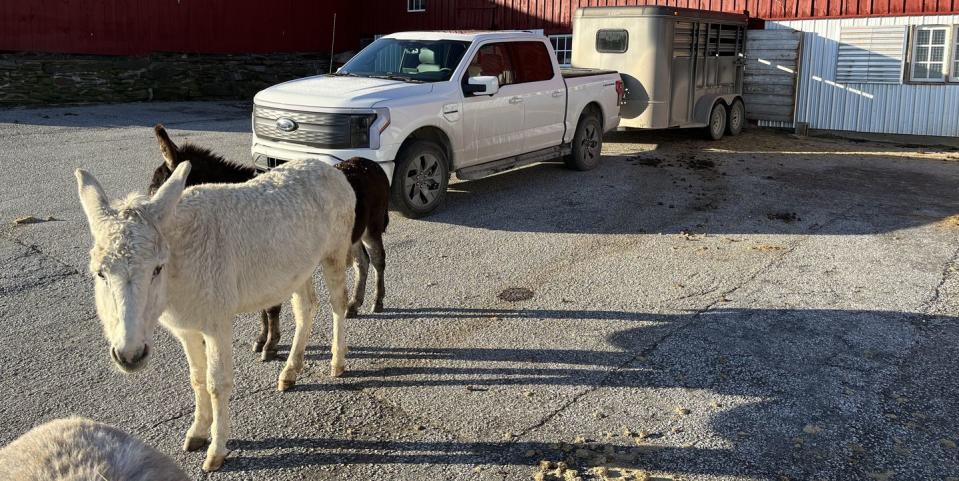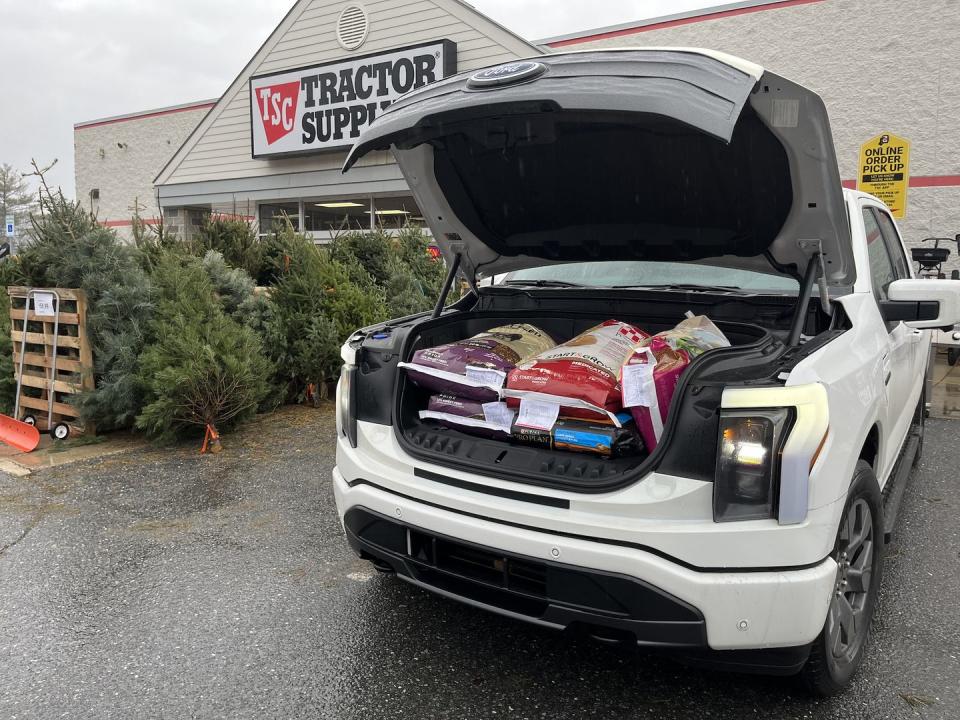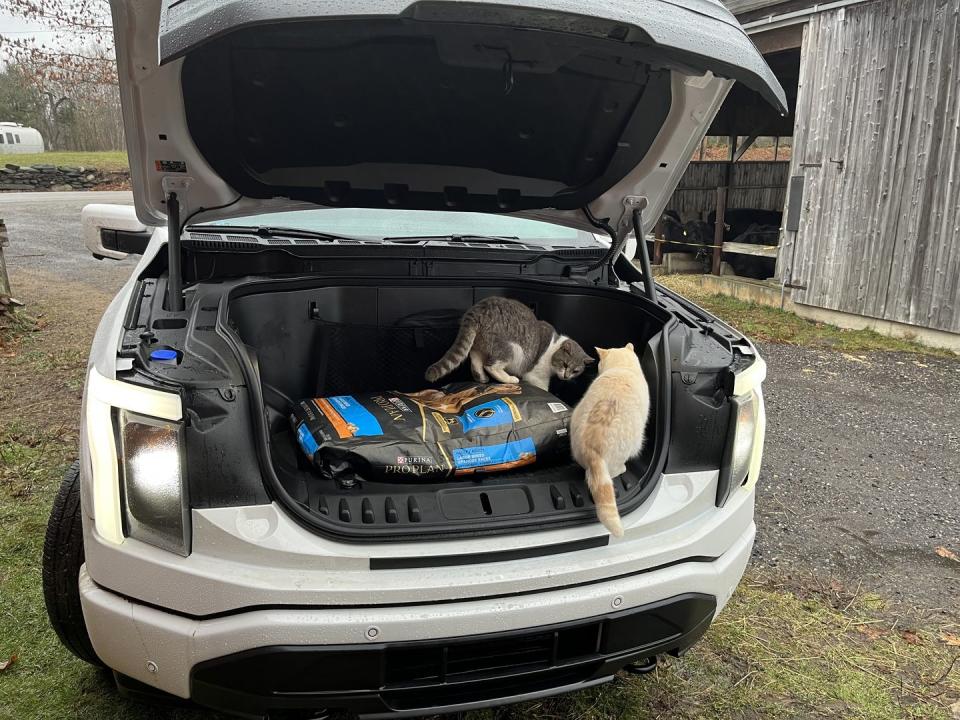Ford F-150 Lightning Goes to Work as a Farm Truck

For a while, I was the fastest farmer in Washington County. No one could touch me. Kids in their lifted, souped-up Tacomas? Forget it. Dudes in tuned diesel Rams and Silverados? Nah. I was the man.
This ruling of green lights and passing lanes was unusual. Our regular farm truck is a 2022 F-150 crew cab with Ford's silky but hardly muscle-bound 2.7-liter twin-turbo V-6. But recently, I got a chance to swap internal combustion for battery-electric power, in the form of a 2022 Ford F-150 Lightning Extended Range. It was a Lariat, just like my truck. Unlike my F-150, this one offered 580 horsepower, 775 pound-feet of torque, and a 4.0-second 60-mph time.
But could it work as a farm truck? That's the question I wanted to answer because I'd love to have a work truck that can cosplay as a Porsche 911 Turbo S when it's time to pass a dawdler on a back road. In fact, the Lightning is 0.2 second quicker than the Turbo S from 50 mph to 70 mph. That'll get respect down at the feed store.

However, that feed store is a long way from home. Around here, everything is. Our 200-acre farm is two miles up a dirt road, about 20 minutes outside of Montpelier (the smallest state capital in America!) so everything is at least 15 miles away. Combine those geographic facts with the farm business (picking up feed; delivering beef cattle and swine to the slaughterhouse or to other farms; towing mowers, log splitters, and various trailers), and we rack up 40,000 miles a year. Even the Ford dealership is 25 miles away.
I feel bad about this prodigious burning of non-renewable resources and its effect on the environment, not to mention the effect on our farm's strained bottom line. So I couldn't wait to get the Lightning out to the farm and put it through its paces.
On my first day with the truck, it was raining buckets, but the animals needed feed. Off to Tractor Supply. I couldn't put the five 50-pound sacks in the open bed because the rain would soak through the bags and ruin the feed. Frunk to the rescue: The Lightning's capacious front trunk serves up 14 cubic feet of cargo capacity where my truck stashes its V-6. Feed bags securely stowed, I couldn't have squeezed anything else in there, but I was still well below the 400-pound weight limit.
I did get some looks while loading. The sight of someone putting feed bags in the front of a pickup resulted in some raised eyebrows, and one guy smirked as though to say, “You idiot. You’ll ruin your engine.”

As part of the modifications Ford made to ready the F-150 for EV duty, the Lightning got an independent rear suspension (IRS), making it the only F-150 with that setup. The extra weight of the battery and the IRS combine to create a planted and creamy ride that is almost as pleasing as the tire-barking launches. I thought our F-150 rides great, but the Lighting is noticeably better.
Because it has IRS, the Lightning doesn’t have that low-hanging solid-axle diff out back, so I hoped it might have better ground clearance than our ICE version and be better able to handle the deep ruts our tractors put in some of our farm roads. Not so. There are still powertrain components, heavily protected with a skid plate, riding low at the rear end. In fact, our F-150 has 9.4 inches of clearance versus the Lightning's 8.4 inches.
Doesn’t matter. After a few days with the Lightning, I knew I wanted one. However, a few critical issues remained: charging, range while towing, and price.

 Yahoo Autos
Yahoo Autos 